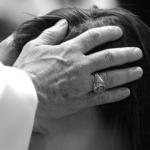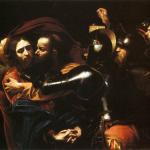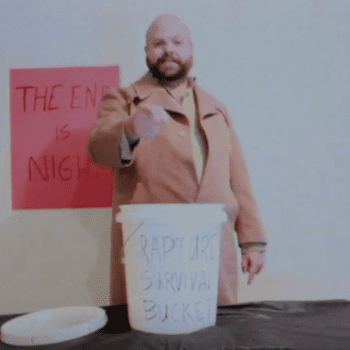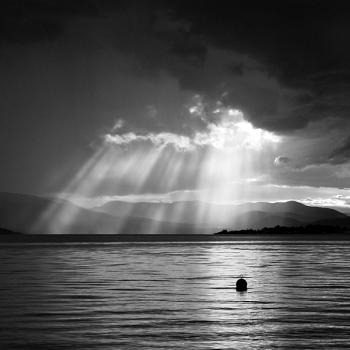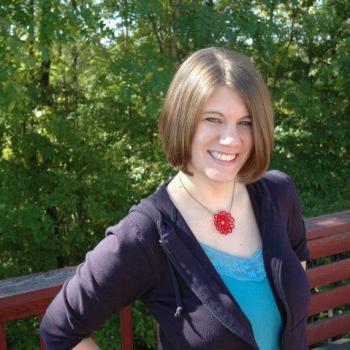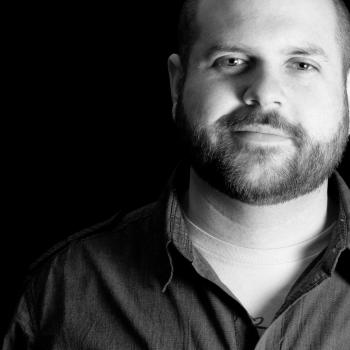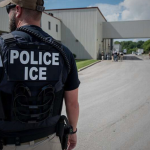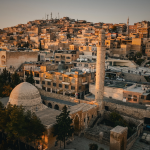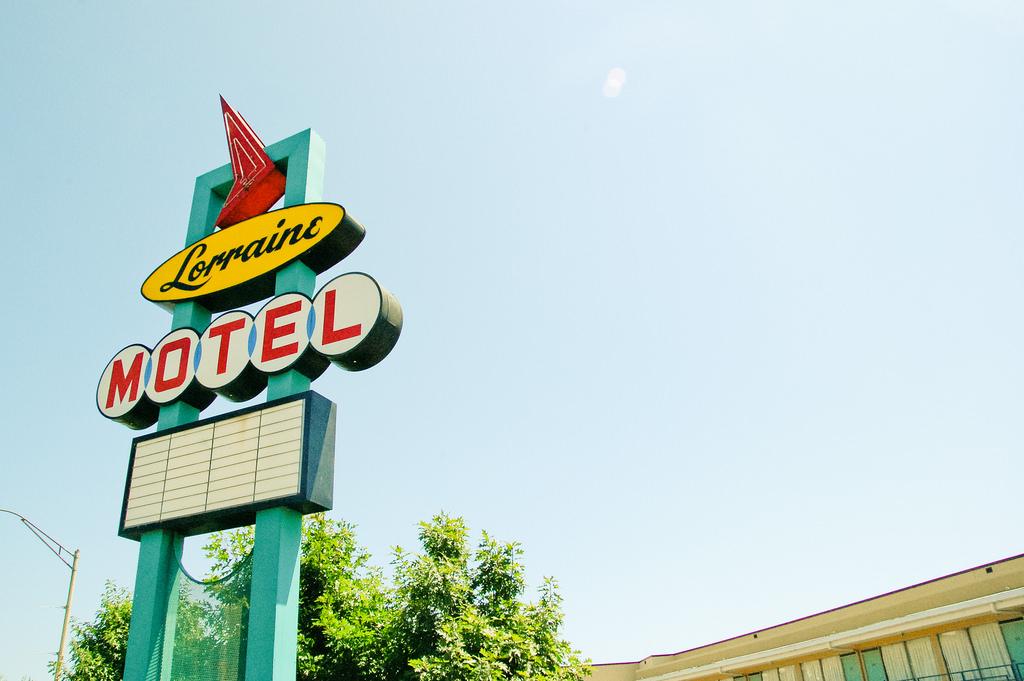
(Credit: Matt Northam, Flickr Creative Commons)
Several years ago, I managed to visit the assassination sites of Martin Luther King Jr. and John F. Kennedy on the same day.
It wasn’t intentional, per se. It just sort of happened.
I was living in Memphis at the time and my friend Joseph was passing through town to pick me up on our way to a theology conference in Dallas, Texas.
Before we crossed the Mississippi River, he asked if it was possible to stop by and see the Lorraine Motel – the place MLK was staying the day he was brought down by an assassin’s bullet. Having wanted to make the pilgrimage, but never seeming to find the chance to do so, I whole-heartedly agreed.
We didn’t have time to take the official tour that day – that opportunity would have to wait for another time, but we did get to walk around the outside of the Lorraine Motel, see the wreath that hangs in perpetuity marking the spot where Dr. King fell, and look over our shoulders at the boarding house window perch from which James Earl Ray sat in an empty bathtub, balanced his rifle on the window sill, and murdered a civil rights icon.
Although a trained history, I confess I’ve always had my interest piqued by conspiracy theories. Not so much because I believe them, but because I always enjoy a good mystery and when that mystery is combined with my love of history to create a provocative History Channel special, I admit, I have a hard time looking away.
Or at least, I used to.
Standing between the assassin’s perch and the sacred space where Rev. King took his last breath I was struck by how close the two are to one another. When seen on TV, they appear miles apart and metaphorically they are, but contrary to what some conspiracy theorist might lead you to believe, the distance is not great. In my younger days, I could easily have thrown a baseball that far while playing catch. In fact, I could probably pull off the same feat today with a little bit of stretching.
In other words, no expert marksman was needed that April morning fifty years ago.
All that was required was hate, opportunity, and a gun.
We left the Lorraine Motel in silence and made our way across the endlessly flat fields of southern Arkansas and on into Texas.
Arriving sometime in the early evening, too early for any self-respecting 20-somethings to eat dinner, we decided to stop by Dealey Plaza and see if we could decipher the mystery of the man of the grassy knoll.
The museum that now resides in the infamous book depository was closed, so we once again found ourselves walking around, exploring the space where our nation’s history had taken yet another tragic turn.
Like the Lorraine Motel, I was struck again by how relatively small the space was in comparison to what I was expecting.
I guess things never are quite as big as they look on TV.
There’s a bronze disc in the middle of highway marking the place where Camelot died. Of course, you can’t stand next to it without having a face-to-face encounter with the front end of an F-150, but you can stand parallel to it on the sidewalk and look over your shoulder to see the window, little more than a baseball toss away, from which another infamous American assassin killed another American hero.
And I did.
And I once again found myself questioning all those grand conspiracies I was told hid the real truth behind the assassination of our nation’s thirty-fifth president.
Perhaps Lee Harvey Oswald was part of some master plan concocted by a dark alliance between the Mafia, Fidel Castro, and the Soviets. But standing in Dealey Plaza that night after having stood in front of the Lorraine Motel that morning, it was clear once again that a master marksman wasn’t needed. Like Martin Luther King Jr. just a few years later, John F. Kennedy, died because someone was consumed by hate, owned a gun, and had the opportunity to act.
I never set out to have such a macabre adventure, but I’m glad things played out the way they did.
Visiting the sites of two of our nation’s greatest tragedies was a stark reminder of an uncomfortable truth, a truth most of us would rather avoid.
Most of us, myself included, would rather go about our lives believing that great acts of evil require superhuman villains and grand conspiracies to carry them out.
But the truth is evil is often insidiously mundane.
To be sure, the effects of evil can be unimaginable. But the actors and systems that bring them about are often far more ordinary, far more a product of and presence in our everyday lives than most of us, myself included, want to admit.
James Earl Ray and Lee Harvey Oswald weren’t comic book super-villains.
Before their names lived in infamy, they were run of the mill, everyday nobodies.
Even their hate – Ray’s racism and Oswald’s bitterness – was not out of ordinary, particularly not for 1960s America.
Perhaps that’s why we turn to conspiracy theories to explain the horror that befell King and Kennedy. Perhaps we believe in the unbelievable because the other option is accepting the unacceptable: that real, ordinary people are capable of great acts of evil.
Despite what provocative History Channel specials may lead us to believe, it didn’t take a grand conspiracy to kill Martin Luther King Jr. and John F. Kennedy.
All it took was hate and a will to act.
Which is exactly why we must be so vigilant in our opposition to racism, xenophobia, and bigotry wherever and whenever we encounter it – no matter who we encounter it in.
And, yes, that includes our friends and family.
Nearly 50 years to the day after the death of one of history’s greatest prophets, we live in a country in which the racism, xenophobia, and bigotry Martin Luther King fought so hard against are once again becoming normalized, accepted, and even sanctified in the name of patriotism, security, and sincerely held beliefs.
All it takes is a small spark to turn these vile ideologies into incarnated evil.
Tragically, the match has already been lit.
More than once.
Across the country we hear stories about the fear driven murder of unarmed black men at the hands of police, the savage murder of a Indian man in Kansas who was told to “get out of my country,” a black man killed in cold blood by a white supremacist hoping to stir up racial fears, and a disturbing rise in horrific, barely reported accounts of transgender men and women brutally beaten and murdered because of their nonconforming identity.
To make matters worse, we have a president who actively fans the flames of prejudice, hate, and even violence.
And friends and neighbors who either adamantly support him or are silently complicit.
In the face of such a state-sanctioned, grassroots approved cauldron of hate and animosity, resistance can seem like a futile endeavor.
But if the anniversary of Dr. King’s assassination should remind us of anything it’s this: we cannot afford to give up the fight for justice and equality.
Because as King wrote from his Birmingham jail cell, “Injustice anywhere is a threat to justice everywhere. We are caught in an inescapable network of mutuality, tied in a single garment of destiny. Whatever affects one directly, affects all indirectly. Never again can we afford to live with the narrow, provincial “outside agitator” idea. Anyone who lives inside the United States can never be considered an outsider anywhere within its bounds.”
As people made in the image of God, all of us – not just the Church – are one body with many parts. If one part suffers, the entire body suffers.
And as followers of Jesus, we are bound by our profession of faith to seek justice, rescue the oppressed, defend the orphan, plead for the widow, and care for the least of these regardless of who they are, where they are, how they identify, who they love, or where they are from and we are to do it as if we are caring for and defending Christ himself.
Yet, sadly, King’s words to self-professed Christians of his own day are just as relevant a half century later…
“I have watched white churchmen stand on the sideline and mouth pious irrelevancies and sanctimonious trivialities. In the midst of a mighty struggle to rid our nation of racial and economic injustice, I have heard many ministers say: ‘Those are social issues, with which the gospel has no real concern.’ And I have watched many churches commit themselves to a completely other worldly religion which makes a strange, un-Biblical distinction between body and soul, between the sacred and the secular.”
Today, we continue to excuses ourselves from the cause of justice, building walls both real and imagined between our faith and those we are called to love and serve, all the while dismissing the prophetic voices among us as if they were the ones creating division over a supposed mere disagreement of opinion.
But King’s death – and the hate-fuelled deaths that make headlines today – should be a lasting testament to the fact that ideas are rarely divorced from action, that unspeakable action doesn’t require unimaginable power or a grand conspiracy, and that ordinary, everyday people, people just like you and me, are capable of great evil. We need only something – or someone – to spark our fury.
It didn’t take a conspiracy to kill Martin Luther King Jr.
He was killed by hate.
Ordinary, everyday hate that bubbled over into action when mixed with the right dose of state-sanctioned racism and a grassroots call to action.
Tragically, the same hate that killed King is still alive and flourishing today.
Which is why we can’t afford to be silent in the face of a rising tide of injustice in America. For to be silent is to be complicit. Nor can we treat the current state of affairs as anything resembling normal political or civil strife. For to do so is to normalize evil itself.
Rather, we must do the hard work of justice. We must summon within ourselves the dedication, courage, and sacrificial will necessary to stand between the oppressor and the oppressed no matter what it might cost us.
Because as Dr. King poignantly reminds us, “Human progress never rolls in on wheels of inevitability; it comes through the tireless efforts of men willing to be co workers with God, and without this hard work, time itself becomes an ally of the forces of social stagnation. We must use time creatively, in the knowledge that the time is always ripe to do right. Now is the time to make real the promise of democracy and transform our pending national elegy into a creative psalm of brotherhood. Now is the time to lift our national policy from the quicksand of racial injustice to the solid rock of human dignity.”

